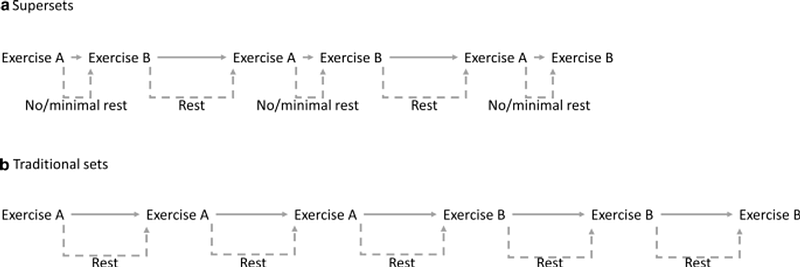Maximize Your Workout Efficiency: 4 Proven Strategies
Written on
Chapter 1: Overcoming Time Constraints for Exercise
Finding time to work out is often seen as a challenge. Between work, family responsibilities, sleep, and volunteer commitments, fitting in exercise can feel impossible. However, struggling to carve out gym time isn’t an indication of laziness; it's a reflection of life’s many priorities.
Fortunately, you don't need to dedicate an hour each day to achieve fitness goals. Recent studies highlighted in Sports Medicine offer insights into optimizing gym efficiency and outline the minimal effort required to see gains in strength, muscle mass, and overall fitness. Let's explore how these findings can help you spend less time in the gym while still reaping substantial benefits.
(This article summarizes current research and my interpretation, but it is not a substitute for medical advice. Consult a professional for personalized training guidance.)
Section 1.1: Reduce Frequency of Training
It's a common misconception that more workouts equate to better results. In fact, going to the gym less often can be beneficial. Many fitness influencers promote daily workouts, but research suggests otherwise.
A systematic review indicates that the optimal exercise volume is around 12–20 sets per muscle group each week, achievable in just a few full-body sessions. Remarkably, studies demonstrate that muscle growth can occur with just one comprehensive workout per week, provided it is sufficiently intense. Imagine the time savings from only needing to drive to the gym once a week!
Additionally, incorporating brief, intense exercise bursts—often referred to as "exercise snacks"—can improve strength without lengthy gym sessions. For instance, high-intensity interval training can be completed in less than five minutes of total effort.
The principle is simple: focus on intensity. If you push yourself close to failure, you can effectively enhance strength and endurance without excessive volume.
Section 1.2: Streamline Your Warm-Up Routine
Many individuals complicate their warm-ups, but they don't have to be lengthy or intricate. The primary objective of a warm-up is to elevate metabolic activity and prepare your body for exercise.
Instead of a lengthy routine, opt for a straightforward warm-up that gradually increases in intensity. For instance, if preparing for squats, start with air squats and progressively add weight until you reach your working sets.
Chapter 2: The Power of Compound Exercises
Save Time in the Gym: Tips for Shorter Workouts - Explore effective strategies to maximize your workout efficiency and minimize gym time.
Section 2.1: Emphasize Multi-Joint Exercises
Focus on compound lifts that engage multiple muscle groups to maximize your workout results. These exercises not only create greater mechanical tension but also induce a higher metabolic response compared to isolation exercises.
While single-joint movements can be beneficial for additional volume, compound lifts are essential for efficiency. Whether using free weights, machines, or bodyweight exercises, prioritizing compound movements will save you time while delivering robust results.
Section 2.2: Optimize Your Rep Schemes
To further reduce gym time, consider manipulating your sets and repetitions. Research shows that the following methods can yield equivalent, if not superior, results compared to traditional approaches:
Supersets: Perform two or more exercises back-to-back with little to no rest in between.

Drop Sets: Execute a traditional set, then immediately reduce the weight by 20–25% and continue with additional sets until failure.
Rest-Pause Sets: Rather than taking a full rest break, incorporate short pauses within a set to achieve a higher total rep count without lengthy downtime.
How to Cut WITHOUT Losing Muscle & Strength - Learn how to maintain muscle while optimizing your workout and reducing time spent in the gym.
Final Thoughts
Choosing the right strategies depends on your fitness goals and personal preferences. For those focused on strength without prioritizing muscle mass, techniques like drop sets or rest-pause may be ideal. Conversely, if your aim is to build larger quads, consider incorporating isolation exercises into your routine strategically.
Remember, there's no one-size-fits-all approach to fitness. While some methods can optimize efficiency, achieving maximal muscle growth or endurance requires time and effort.
Ultimately, understanding your goals will help you determine the best strategies to implement for your success.